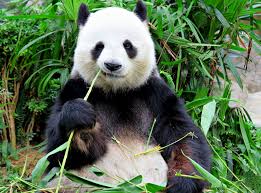Source: theguardian.com
Published: March 20, 2003

Keith Laidler
Bambo is one of the most successful plants on earth. With more than 1,500 species colonising a multitude of habitats from sea level to 12,000 feet, bamboo is a phenomenon of the vegetable kingdom. It can also add significant solutions to environmental problems to its list of successes.
After the Hiroshima bomb in 1945, bamboo survived the atomic blast closer to ground zero better than any other flora or fauna. It can also be used to “repair” soil damaged by overgrazing and poor agricultural techniques, while its complex network of roots are ideal for preventing soil erosion and flooding. Unlike most tree species, harvesting does not kill the bamboo, so topsoil erosion and other adverse effects of tree-felling are kept to a minimum.
Perhaps even more important, given the carbon dioxide emissions thought to be responsible for global warming and the threat to biodiversity, bamboo produces more than 35% more oxygen than trees. Research in Japan and elsewhere has demonstrated that bamboo can absorb as much as 12 tonnes of carbon dioxide per hectare per year, giving the plant a potentially crucial role in stabilising our planet’s atmosphere. More bamboo would undoubtedly help the environment – but we need to find more modern uses for the plant.
For more than 4,000 years people have used bamboo in an astonishing variety of ways: paper, construction, food, weaponry, medicine and even as aphrodisiacs. However, most bamboo consumption is confined to South East Asia and Central America, where the most economically valuable species flourish. Except for garden canes, fishing rods and conservatory furniture, the plant has never found a major market niche in the developed world.
This may be about to change. Plyboo is a composite of bamboo layers, glued together under high pressure. It promises a more eco-friendly alternative to wood floors produced from oak, beech and tropical hardwoods. Plyboo has several advantages commercially, being durable (as hard as most oak flooring) and shrink/swell resistant. Ecologically, it also has the edge on more traditional flooring and laminates.
Bamboo can be harvested sustainably, new shoots appearing from the roots every year and growing to harvestable condition in just four or five years, far faster than slow-growing hardwoods. Plyboo can be produced in small factories and, although the glue used in the process is not exactly 100% eco-friendly, the environmental impact of production is relatively innocuous compared with other methods of producing similar products.
So far so good. But how can bamboo protect endangered species? Saving forests automatically protects the species living within that habitat, but bamboo and plyboo production can deliver an even more direct benefit for the world’s most endangered species – the giant panda.
Although much successful work has been achieved in the captive breeding of the giant panda, the wild species is in serious trouble. Only around half of the estimated 900-1,000 wild pandas are located in nature reserves. Even within these reserves the panda is at risk: illegal logging and agricultural encroachment mean that the reserve’s forests are now fragmented, existing as woodland “islands”, each surrounded by a sea of human activity.
The populations of panda marooned within these islands are tiny, normally 10 animals or less. It is generally acknowledged that the minimum viable population (MVP) for large mammal species is around 50 animals. Any population below this figure is regarded as non-viable, and will eventually succumb to the deleterious effects of inbreeding.
Denied the ability to migrate to new areas or “outbreed”, the mass of small, isolated giant panda populations have no long-term future; and as it appears that every wild panda is isolated in this way, the future of the species in the wild is bleak indeed.
One of the best ways of effecting communication between marooned populations is by planting strips of natural forest cover, so-called “green corridors” between two woodland islands. Once established, these act as migratory highways, the animals gradually exploring the new long stretch of secure habitat until they meet with members of their own species from the other isolated island. This is a proven technique for several mammal species, although it has not yet been attempted with an animal as large as the giant panda.
All this is about to change with a new venture between China’s Wolong Giant Panda Research Centre and the Panda Trust based in the UK. Following earlier evaluations, the first bamboos have now been planted on the Pitiao river, between two known panda habitats in the reserve. The plan is to plant 0.5km-wide “bamboo corridors” on degraded agricultural land between these two panda “islands”.
Native forest species will also be interplanted with the bamboo. Bamboo grows quickly and it is estimated that within two or three years, sufficient cover will be avail able to induce the movement of pandas through the corridor. Even minimum migration – just 1% exchange of genetic material per generation – will ensure the viability of the two panda groups joined by the corridor.
The bamboo stands should be mature within eight or nine years, with full tree cover following around 12 years later. Once the technique is proven, it is planned to connect all the reserve’s isolated panda populations – around 100 animals and approximately 10% of the world’s wild pandas – via a network of bamboo corridors.
As the project progresses, “buffer zones” of bamboo will be planted on either side of the corridor; when mature, these areas will furnish the raw material for locally produced plyboo, which will not only provide local employment and stimulus for the Wolong economy, but should also help reduce the pressure on the reserve’s woodlands to provide timber for the local community. If the giant panda project succeeds, it will benefit the global community, too.
· Dr Keith Laidler is director of the Panda Trust
· Email keith@panda-trust.org.uk or call 01388 517003
